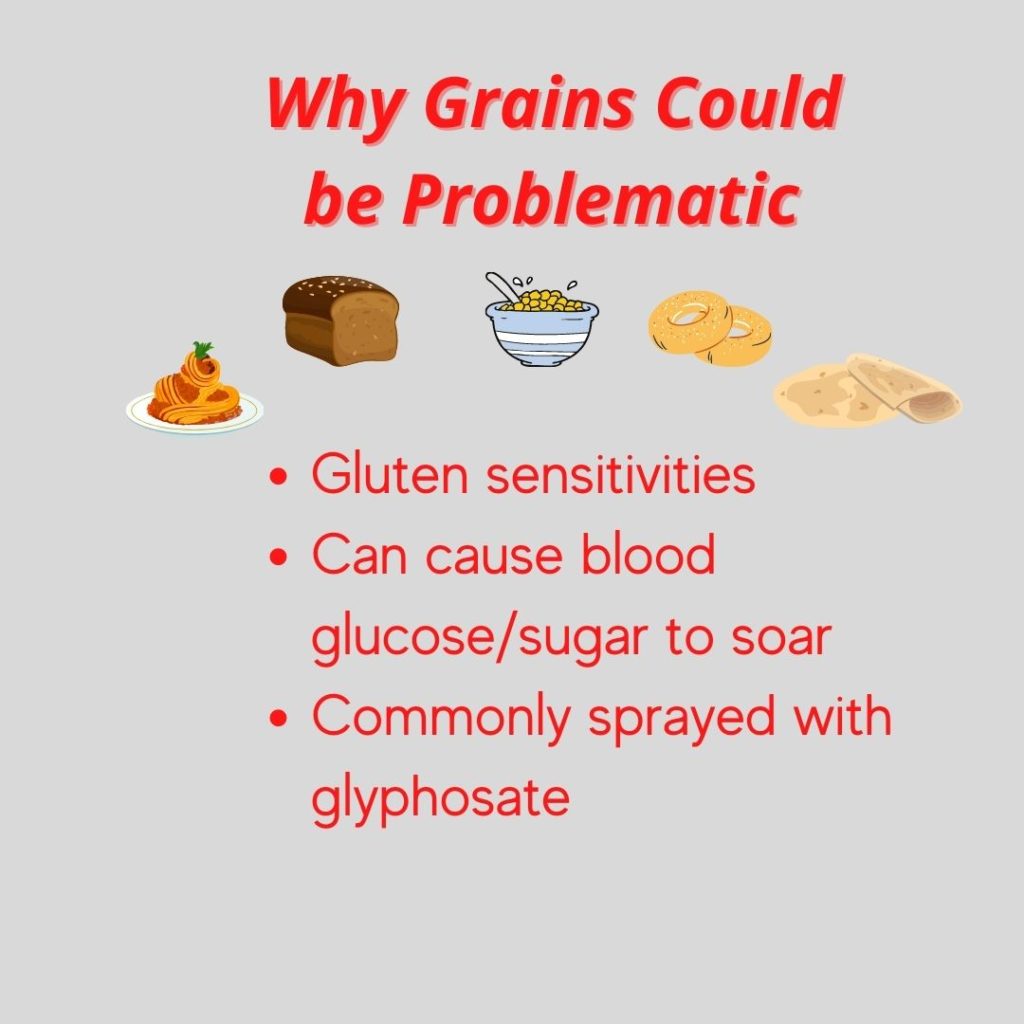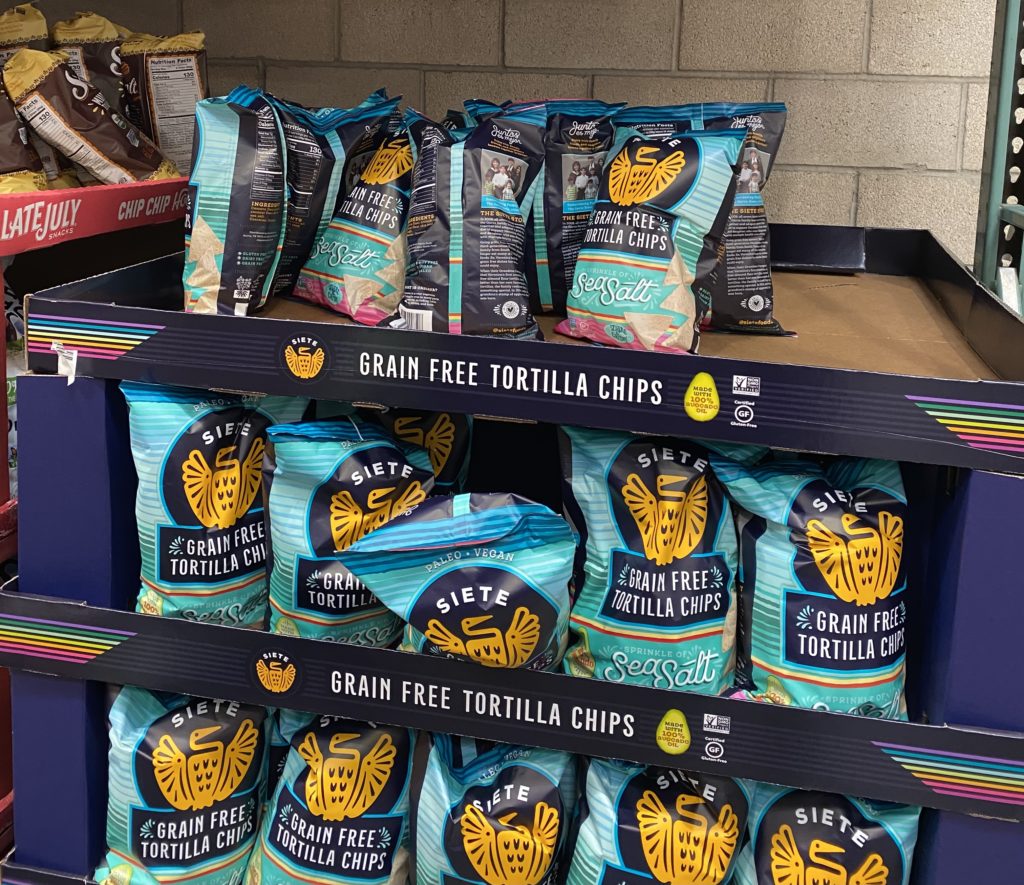Bread, cereal, tortillas, chips, pasta, and bagels. These foods used to be staples in my diet. Now, I hardly eat them, or if I do, I look for healthier alternatives (discussed in the last paragraph). Here are three of the biggest reasons I don’t consume grains to the extent that I used to.

First and foremost, a grain-based diet, even the lauded whole grain-based diet, is a sugar-based diet. With grains offering a majority of their calories in the form of carbohydrates, much of the types of grain you eat (bread, cereal, pasta, etc.) are converted directly into glucose upon ingestion. Consume typical whole wheat spaghetti noodles, and you’re looking at 60 plus grams of carbohydrates in one sitting, and that is being generous. This amount of carbohydrates will cause your blood glucose and sugar levels to spike, even causing some people by medical standards to become temporarily diabetic if they aren’t so already. Measuring the glycemic index (GI), which measures how quickly blood sugar rises after eating particular foods, you’ll find that a slice of whole wheat bread has a score of 71. A Snickers bar has a GI score of 55! That’s not an invitation to eat Snickers regularly, but it puts into context what wheat is doing to our blood sugar. More blood sugar means bigger energy crashes and more stress on the body.
Next, grains contain gluten. Gluten is found in most common grains such as wheat, rye, and barley. About 5% of people have celiac disease, where gluten causes damage to the small intestine upon ingesting. But, researchers now believe one-third of us could be classified as gluten-intolerant or gluten-sensitive. Folks sensitive to gluten will react with bloating, a flare-up of arthritis, skin conditions like acne, acid reflux, migraines, reproductive problems like polycystic ovarian syndrome, and other autoimmune disorders. Gluten has also been shown to reduce blood flow to the brain, interfere with thyroid function, and deplete vitamin D stores. Unfamiliar proteins similar to gluten are also present in other grain foods like oats (has avenin) and barley (has hordeum) which could present similar problems that gluten does.
Lastly and probably the most alarming is that much of our conventionally grown grains contain glyphosate. Glyphosate is the main ingredient found in Roundup, the weed killer chemical that is sprayed on grains and other crops. In May of 2015, the World Health Organization classified glyphosate as “probably carcinogenic to humans,” showing that glyphosate caused tumor growth and higher cancer incidence in animal studies. The Environmental Working Group (EWG), in a test in 2019, detected glyphosate in all 12 of the wheat-based products tested. The year before, the EWG found glyphosate in 95% of popular oat-based food samples. The breakfast cereal Cheerios has consistently been found to contain trace amounts of glyphosate along with other name brand products marketed as healthy choices for families.
Up until five years ago, I used to go heavy on grains. I’d have pasta at least once a week, bread and tortillas practically every day, and oatmeal for breakfast. I always believed grains, especially whole-wheat grains, were the right choice. A couple of things with my body have changed since I have drastically cut back on grains. One, I don’t nearly have the amount of joint pain in my body, especially in my knees. Since I’ve mostly stopped eating grains, my flare-ups are a rarity. Secondly, I was on the verge of becoming pre-diabetic, looking back at bloodwork before limiting and cutting out the grains. I was not tuned into my dietary choices, and I believe the high amounts of grains I ate in addition to other unhealthy foods were leading me down a path of insulin resistance.
Fortunately, you can make healthy swaps and substitutions if you want to avoid grains or consume healthier grain options. Ezekiel bread is a sprouted wheat grain with much lower levels of gluten, carbohydrates, and ingredients than most conventional wheat bread. This is what I go with, the small amounts of time I consume bread. For pasta, I like to substitute zucchini or squash noodles. I admit, it is not as tasty as authentic pasta, but throw some homemade pesto sauce on the noodles, and it tastes pretty close. Cassava, cauliflower, and almond flour-based chips, pizza crusts, and tortillas make great substitutes for the conventional grain-based forms of these foods. My favorite grain-free brand is Siete which makes delicious chips and tortillas, among other foods.  Lastly, go organic if you can. Foods that are USDA organic must be grown or produced with no herbicides, pesticides, or fertilizers. That means no Roundup and no glyphosate.
Lastly, go organic if you can. Foods that are USDA organic must be grown or produced with no herbicides, pesticides, or fertilizers. That means no Roundup and no glyphosate.
![]() To MAS health,
To MAS health,
Michael
Brilliant- This is incredibly helpful, clear! Thanks!
Thank you! I am glad it helped.